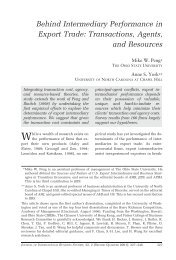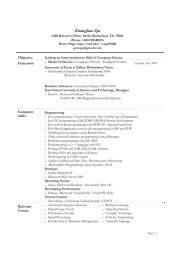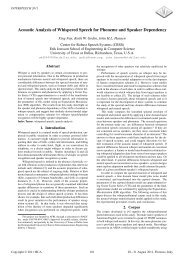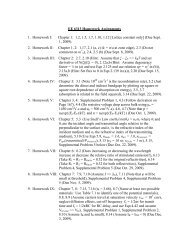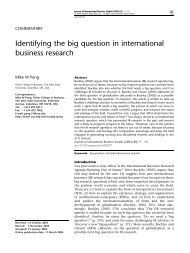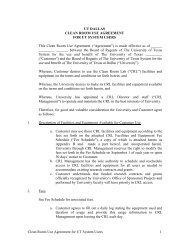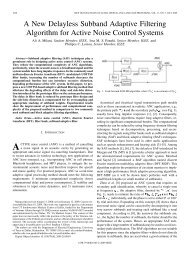SOLUTION FOR HOMEWORK 3, STAT 4352 Welcome to your third ...
SOLUTION FOR HOMEWORK 3, STAT 4352 Welcome to your third ...
SOLUTION FOR HOMEWORK 3, STAT 4352 Welcome to your third ...
You also want an ePaper? Increase the reach of your titles
YUMPU automatically turns print PDFs into web optimized ePapers that Google loves.
This is the answer. But again, as an extra example, I can suggest a MME based on the<br />
second moment. Indeed, Eλ(X 2 ) = V arλ(X) + (EλX) 2 = λ + λ 2 and this yields that<br />
˜λMME + ˜ λ 2 n<br />
MME = n−1 X<br />
i=1<br />
2 i .<br />
Then you need <strong>to</strong> solve this equation <strong>to</strong> get the MME. Obviously it is a more complicated<br />
estima<strong>to</strong>r, but it is yet another MME.<br />
3. Problem 10.56. Let X1, . . .,Xn be iid according <strong>to</strong> the pdf<br />
gθ(x) = θ −1 e −(x−δ)/θ I(x > δ).<br />
Please note that this is a location-exponential family because<br />
X = δ + Z,<br />
where Z is a classical exponential RV with f Z θ (z) = θ −1 e −z/θ I(z > 0). I can go either further<br />
by saying that we are dealing with a location-scale family because<br />
X = δ + θZ0,<br />
where f Z0 (z) = e −z I(z > 0).<br />
So now we know the meaning of parameters δ and θ: the former is the location (shift)<br />
and the latter is the scale (multiplier).<br />
Note that this understanding simplifies all calculations because you can easily figure out<br />
(otherwise do calculations) that<br />
Eδ,θ(X) = δ + θ, V arδ,θ(X) = θ 2 .<br />
These two familiar results yield Eδ,θ(X 2 ) = θ 2 + (δ + θ) 2 , and we get the following system of<br />
two equations <strong>to</strong> find the pair of MMEs:<br />
ˆδ + ˆ θ = ¯ X,<br />
2ˆ θ 2 + 2ˆ δˆ θ + ˆ δ 2 = n −1<br />
n<br />
Xi.<br />
i=1<br />
To solve this system, we square the both sides of the first equality and then subtract the<br />
obtained equality from the second equality. We get a new system<br />
ˆδ + ˆ θ = ¯ X,<br />
ˆθ 2 = n −1<br />
n<br />
X<br />
i=1<br />
2 i − ¯ X 2 .<br />
This, <strong>to</strong>gether with a simple algebra, yields the answer<br />
ˆδMME = ¯ X − [n −1 n <br />
i=1<br />
X 2 i − ¯ X 2 ] 1/2 , θMME<br />
ˆ = [n −1 n <br />
X 2 i − ¯ X 2 ] 1/2 .<br />
2<br />
i=1





